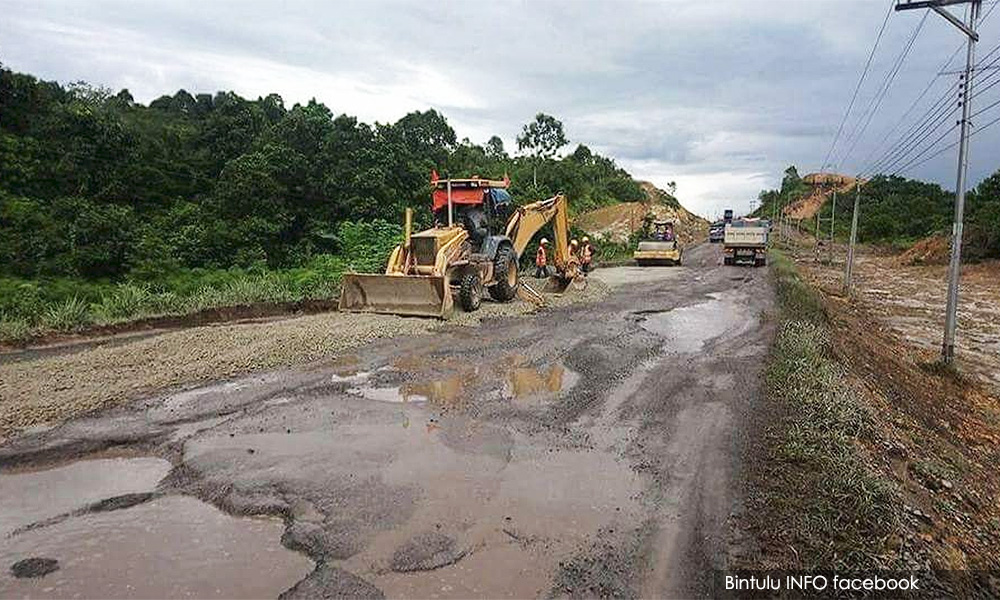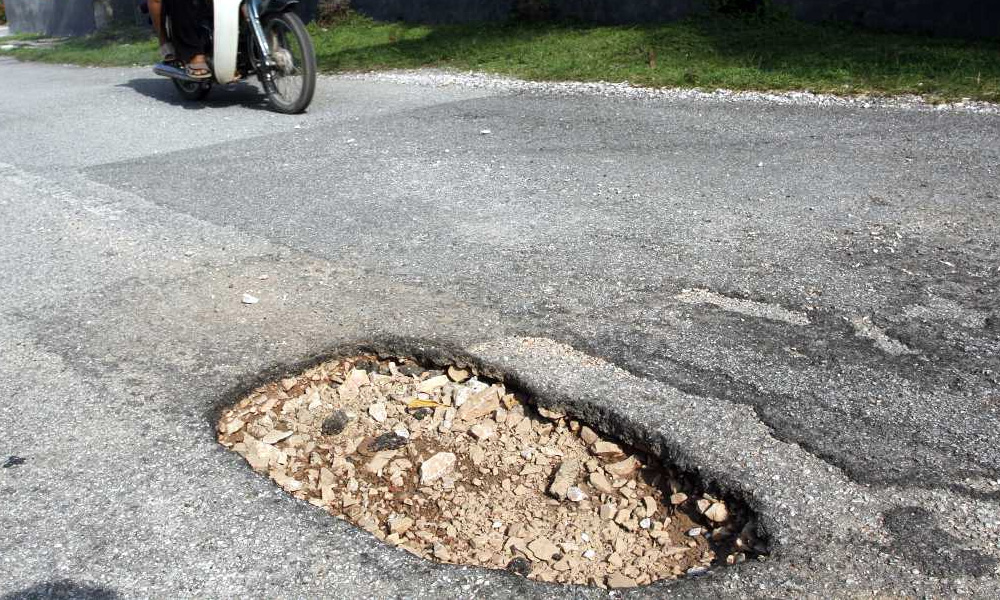One way of preventing plastic waste from wreaking havoc on the environment is by discovering innovative ways of using it for beneficial purposes.
Malaysia is currently carrying out a study on the use of plastic waste as a component, along with asphalt, for resurfacing roads.
Other countries like India have already experimented with its use and have been getting positive results as the roads have proven to be stronger and more durable.
The conventional asphalt for road paving is losing its lustre due to its short lifespan, which has led to higher road maintenance costs for Malaysia.
Asphalt is a mixture of bitumen (a sticky black and highly viscous liquid) and aggregate (sand, gravel and crushed stone) that is usually used for surfacing roads.
The Public Works Department's Centre of Excellence for Engineering and Technology (CREaTE) is currently testing road pavement technology utilising waste plastic asphalt, as well as latex asphalt, at two sites: the FT98 federal road in Kerdau, Temerloh, Pahang; and FT3 federal road in Chukai, Kemaman, Terengganu.
According to CREaTE road research laboratory head Mohd Hizam Harun, the Temerloh site study involved paving a mixture of plastic waste and asphalt on one lane of a 175-metre stretch along the road.
"It was the first time plastic waste was being used as a material for road pavement in Malaysia," he said.
Mohd Hizam was briefing Works Minister Baru Bian and senior ministry officials during a recent visit to the site as part of the ministry's three-day FTRoadpedia Eastern Zone 2.0 road trip to Pahang, Kelantan and Terengganu.
The programme's objectives, among others, were to monitor the quality of maintenance of the federal roads in the three states.

The Indian experience
At the Temerloh site, a 645-m stretch of road (one lane) was paved with latex asphalt (a mixture of natural rubber latex and asphalt) as PWD is also studying its efficacy as a road surfacing material. The road paving works on both stretches were completed in September 2017.
At the Kemaman site, CREaTE is testing three types of paving materials, namely, waste plastic asphalt over one lane of a 615-m stretch of road; latex asphalt over a 990-m stretch; and latex mastic asphalt over a 1,330-m stretch.
The resurfacing of the three road stretches was completed in October 2018.
Mohd Hizam said the findings of the study at the two sites were expected to be concluded after two years of monitoring the sites.
"From our initial monitoring (of the sites), it seems to be positive," he said.
Mohd Hizam said the use of asphalt and plastic waste was not exactly a new technology as it had been used by India for the last 15 years.
India has used plastic waste as a component to pave about 25,000km of road, he said, adding that the roads concerned have proven to be more resilient than those paved with conventional asphalt.
Indonesia had also carried out a study on the use of the plastic waste and asphalt mixture on a road in Bali in 2017.
Sourcing for plastic waste
For road-paving purposes, explained Mohd Hizam, about 4,000kg of plastic waste have to be mixed with asphalt to resurface each one-km stretch of a two-lane road.
"The plastic waste is priced at (only) RM3.50 a kg, so adding it to asphalt will not lead to a sharp hike in road resurfacing costs," he said.
Also, if waste plastic asphalt succeeds in enhancing the durability and lifespan of roads, it can result in a significant saving in maintenance costs.

Mohd Hizam said the waste plastic asphalt formula they used was similar to the one developed by India.
Pointing out that only two percent of plastic waste generated in Malaysia could be used for the road-paving industry, he said Malaysia would have to import it from countries like the United Kingdom and Australia to meet its needs if it decides to use waste plastic asphalt as a resurfacing material.
"We cannot use most of the plastic waste produced in this country as they contain traces of food waste," he said, adding that for its two site studies, CREaTE used plastic waste purchased from a factory in Kuantan, Pahang.
"This particular factory processes plastic waste disposed of by factories and shopping malls, and not plastic waste found at garbage disposal sites," he said.
On how waste plastic asphalt is produced, Mohd Hizam said the plastic is shredded before being mixed with heated aggregate.
The heat will cause the plastic to melt onto the stones and hold them together. Bitumen is then added to this mixture to produce waste plastic asphalt.
"The binding power of the bitumen and aggregate in the resulting asphalt becomes stronger. Not only that, but the mixture also has better resistance to water.
"In the case of conventional asphalt, water can weaken the binding power (of the bitumen and aggregate), which is one of the reasons for the formation of potholes on roads," he explained.
Latex mixture
Meanwhile, CREaTE's site studies have shown that the addition of natural rubber latex to asphalt has the ability to improve the bitumen's characteristics.
According to Mohd Hizam, the latex enhances the bitumen's elasticity and makes it less liable to go slack when exposed to hot weather, thus enabling it to withstand the pressure exerted by the passing high-volume traffic.
He said the latex used for the site studies was purchased from a factory in Johor Bahru at RM6.50 a litre.
"For the latex asphalt mixture, the amount of latex used only comprises 2.5 percent of the weight of the bitumen. We don't need that much (latex)," he added.

The latex asphalt mixture to resurface each kilometre of a two-lane road will require between 1,000 and 2,000 litres of natural rubber latex.
Preliminary findings from CREaTE's studies have shown that latex asphalt has stronger resistance to the formation of cracks and dents on the road surface.
Mohd Hizam said although latex was more expensive than plastic waste, the use of latex asphalt for road paving would not lead to any sharp rise in costs; in fact, it would help to boost the local rubber industry.
Previously, the Malaysian Rubber Board and PWD have been involved in a joint study to determine the effectiveness of using Cuplump (freshly coagulated rubber) Modified Asphalt (CMA) for road resurfacing works.
Their preliminary findings have shown that CMA was more durable than conventional asphalt.
Mohd Hizam said it was still too early to determine which one of the two - CMA or latex asphalt - was more resilient and durable since the studies were still ongoing.
- Bernama

